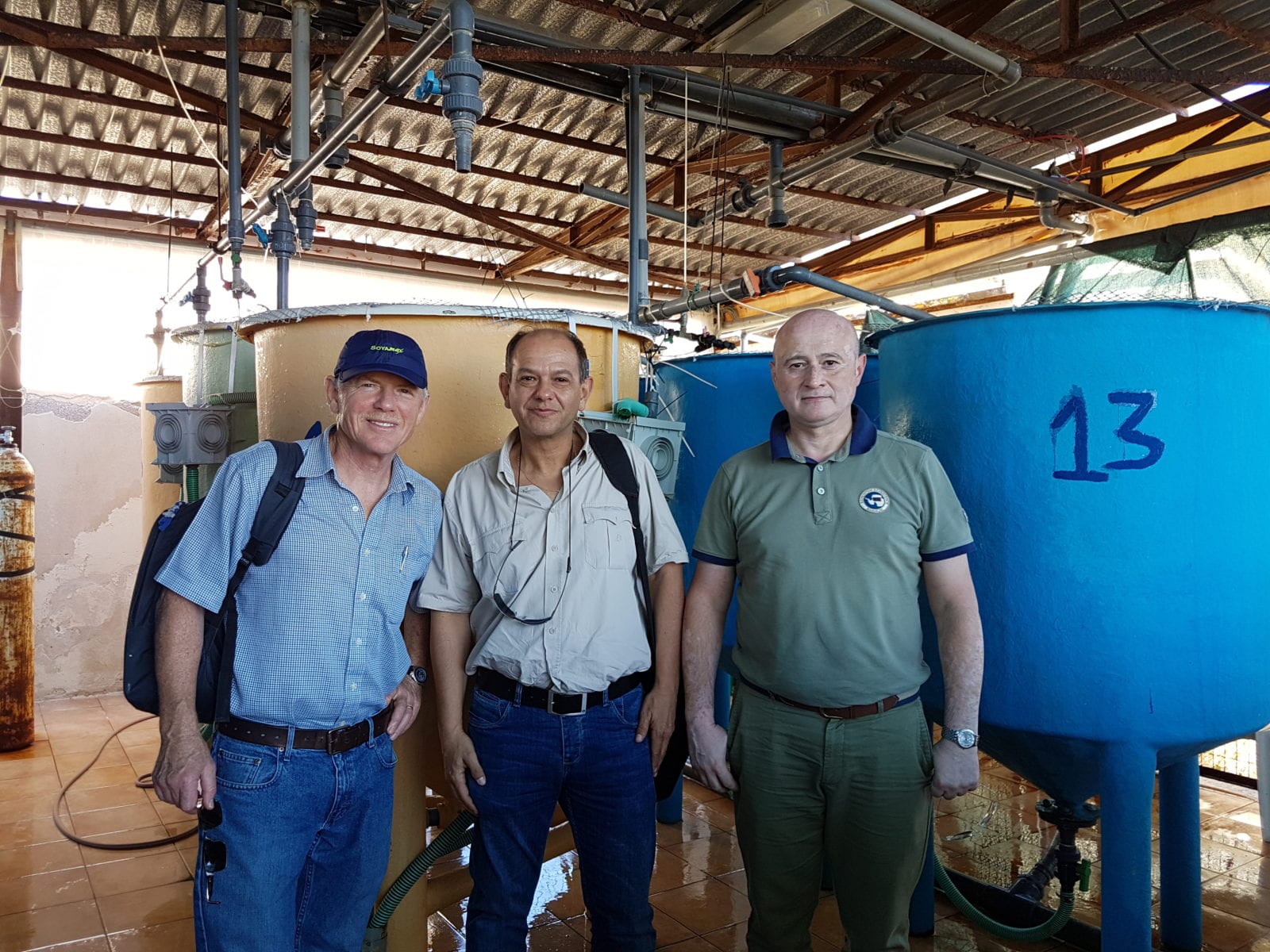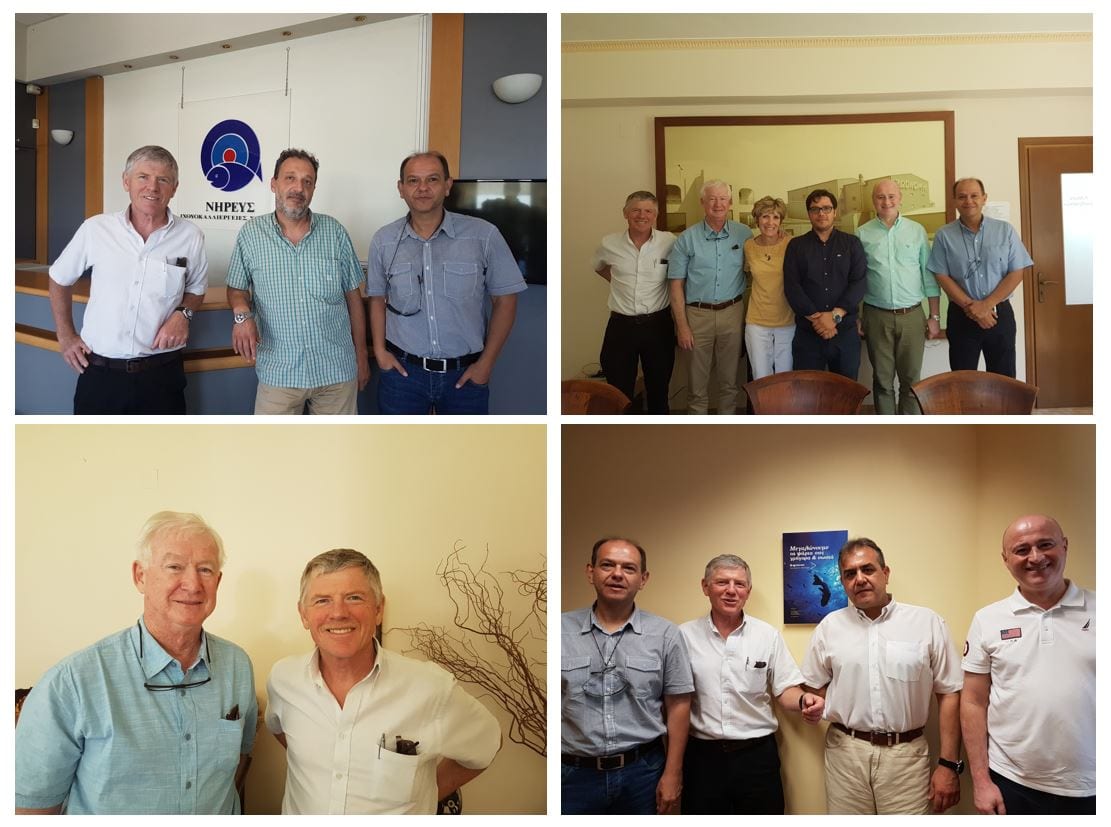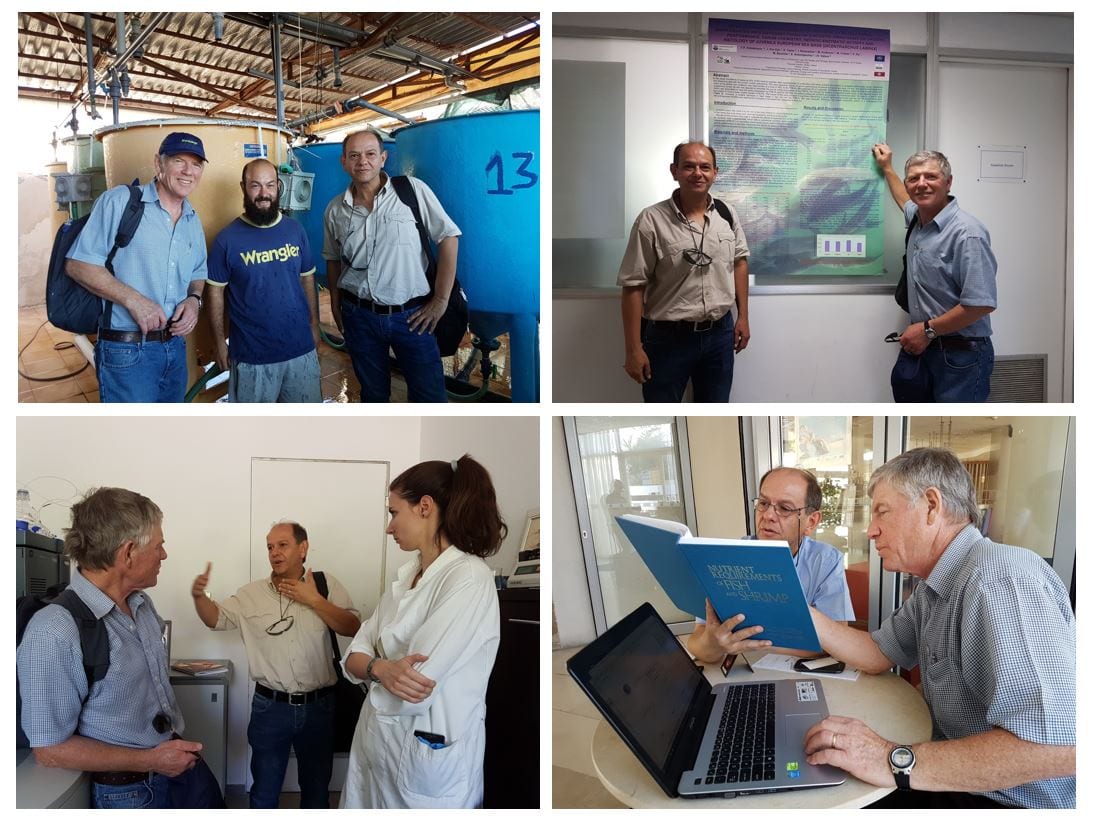Greece’s Consolidation of Aqua Farming Sector Creates Significant Future Opportunity for U.S. Soy in Mediterranean Region
- Category:
- Aquaculture
- General News

During the first week of June, USSEC consultants Dr. Jan van Eys and Dr. Iani Chihaia, supported by Dr. Yannis Kotzamanis, senior researcher from the Institute of Marine Biology, Biotechnology and Aquaculture (HCMR) in Athens, Greece, initiated a survey of Greece’s aquaculture industry, a country that had been a focal point of the American Soybean Association’s (ASA) aquaculture activity in the region and which remains a good potential for the export of U.S. Soy products. The industry meetings demonstrated that U.S. Soy quality enjoys a very positive image and there are still positive memories of past activities and USSEC’s support of Greece’s aquaculture industry.

Greece’s fish farming sector, with over 201,578 tons produced in 2015, ranks fourth in the European Economic Space (not E.U.), after UK (201,578 tons), Turkey (234,000 tons), and Norway (1,382,800 tons), and ahead of Spain, Italy, France, Denmark, and Germany. The sector has tremendous potential for growth in Greece although it has suffered from the economic crisis, much as many other sectors of the economy.
The most important fishes farmed in Greece are sea bream and sea bass, which are the most farmed (by volume) fish species in the EU. Sea bream is the third with a 36.4 percent share and sea bass being the fourth with a 28.15 percent share from total fish farmed in the E.U. Due to the remarkable success achieved by the Greek’s aquaculture sector for the past decade, at this stage they are producing almost half of the sea bass and sea bream farmed in the Mediterranean. However, there are some concerns regarding the lack of growth and improvement in Mediterranean marine fish farming.

Meanwhile, there is an ongoing consolidation within the sector, due to an increasing interest from foreign investors in Greece’s aquaculture sector. In this regard, foreign investors and U.S. private investment funds are eyeing the top local largest bream and bass companies. If the acquisitions take place, the largest conglomerate will be formed in the bream and bass, with an estimated production of over 70,000 tons of bass and bream annually. This should increase production volume and U.S. Soy consumption will potentially grow.
On the other hand, the Greek aqua industry is currently facing the same pressure to substitute fishmeal with plant-based alternatives and there is a lack of knowledge regarding the proper application / use of products in aqua diets and amino acid digestibility, especially for bream and bass species. Communication between local and regional research and commercial companies is complicated and almost inexistent at this stage.
As Dr. Roland Hardy of Idaho University was present during the USSEC consultants’ visit to Greece, various aspects of fish research were specifically discussed: the need to more precisely define soy product quality in terms of nutritional definitions and the specific requirements of bass and bream fishes, integration of research trials with larger field trials (cage production) and evaluation of alternative soy sources such as soy concentrates and fermented soybean meal in fish diets.

Under these conditions, USSEC should play a pivotal role in putting together researchers and commercial companies from Greece, Turkey, Spain and the U.S. in order to demonstrate the positive effects of using U.S. Soy products and the long-term health benefits of fishmeal and fish oil substitution. In the meantime, the bream and bass farming industries from the Mediterranean region need information gained in experimental facilities, backed by science and validated under true farm conditions in order to be implemented by the commercial farms.
Research on establishment of nutrient requirements of bream and bass and soy products’ digestibility coefficients are needed for each life stage and age of these valuable fish species. All these premises and the imminent growth of the industry create a significant future opportunity for soy, in addition to the current use.